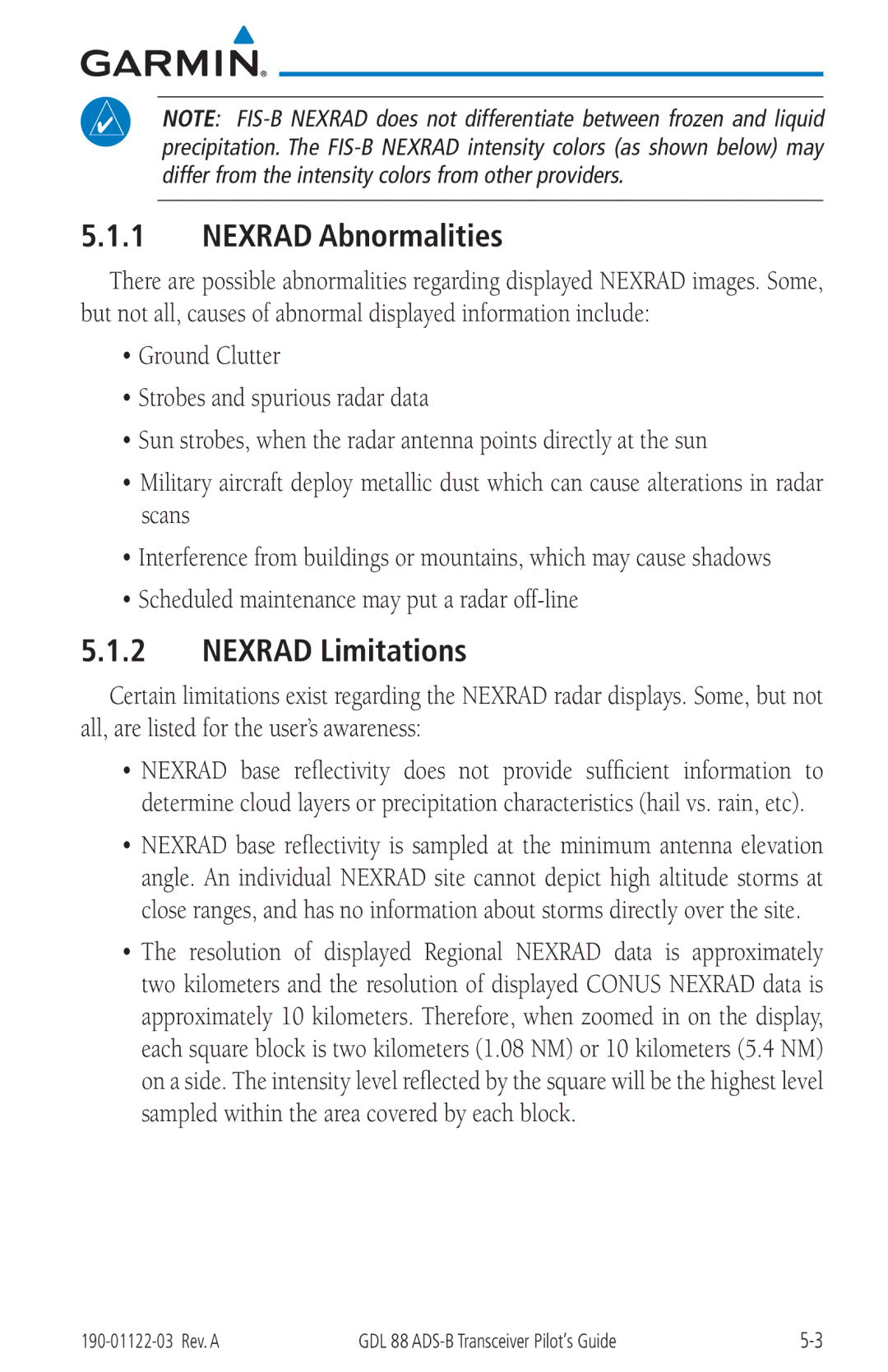
NOTE:
5.1.1NEXRAD Abnormalities
There are possible abnormalities regarding displayed NEXRAD images. Some, but not all, causes of abnormal displayed information include:
•Ground Clutter
•Strobes and spurious radar data
•Sun strobes, when the radar antenna points directly at the sun
•Military aircraft deploy metallic dust which can cause alterations in radar scans
•Interference from buildings or mountains, which may cause shadows
•Scheduled maintenance may put a radar
5.1.2NEXRAD Limitations
Certain limitations exist regarding the NEXRAD radar displays. Some, but not all, are listed for the user’s awareness:
•NEXRAD base reflectivity does not provide sufficient information to determine cloud layers or precipitation characteristics (hail vs. rain, etc).
•NEXRAD base reflectivity is sampled at the minimum antenna elevation angle. An individual NEXRAD site cannot depict high altitude storms at close ranges, and has no information about storms directly over the site.
•The resolution of displayed Regional NEXRAD data is approximately two kilometers and the resolution of displayed CONUS NEXRAD data is approximately 10 kilometers. Therefore, when zoomed in on the display, each square block is two kilometers (1.08 NM) or 10 kilometers (5.4 NM) on a side. The intensity level reflected by the square will be the highest level sampled within the area covered by each block.
GDL 88 |
